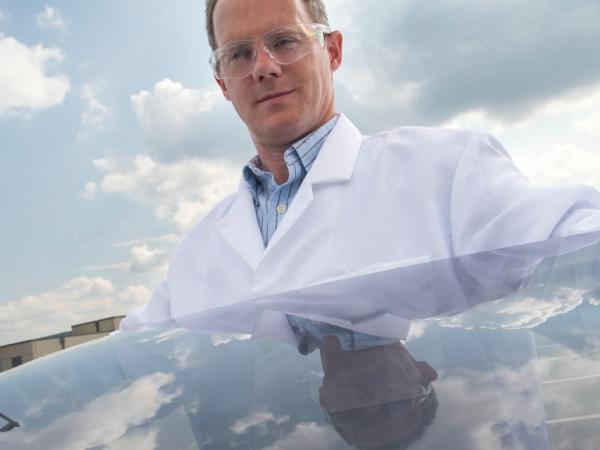
Date: 11 July 2016
But if those windshields incorporate a thin layer of Corning® Gorilla® Glass for Automotive, they will likely suffer less damage from such stones.
Plus, the windshield is nearly a third lighter than conventional ones. Those are just a few of the findings of a new joint study by Corning and Ford. The companies conducted the research last summer and released the findings at the recent SAE 2016 World Congress and Exhibition.
The study focused on the performance of a three-ply windshield laminate with Corning® Gorilla® Glass for Automotive as the inner layer, a plastic adhesive interlayer, and annealed soda-lime glass as the outer layer.
Comparisons to conventional laminates, with two layers of soda-lime glass, yielded some immediate differences.
The Gorilla Glass laminate was 28 percent thinner and 31 percent lighter. But testing performance – specifically, how well thin laminates stand up to flying stones – was at the heart of the study. And in the process, the researchers deepened their understanding of the physics of the situation.
Conventional windshield laminates can be up to 5 millimeters thick. If a high-speed stone hits the laminate, the outer layer is most likely to crack, said Tom Cleary, a Corning reliability testing manager.
But with thinner, more lightweight laminates, said Tom, "we observed a fundamental shift in the way windshields can fail due to stone impact. They have a much greater level of flexure, or slight bending.
"This in turn, means you're going to put higher stress on the inside surface of the laminate. Therefore it is the inner ply that is at a higher risk for breaking and could potentially result in glass being ejected into the cabin."
To test for toughness, researchers used two windshield laminates: one with Gorilla Glass on the inside and a total glass thickness of 2.2 millimeters, and a second with two annealed sheets of soda lime and a total thickness of under 3.2 millimeters. The results, once again, were clear.
The inner layer of the all-soda-lime windshield broke in more than half the tests. Some of these resulted in glass fragments being ejected into the cabin. The laminates made with a thin Gorilla Glass inner layer, on the other hand, did not experience any breakage of the interior ply in the tests.
"It's very exciting to know we've come across a combination of materials that really takes advantage of their unique properties," Tom said.
For Corning, the study was especially significant because it's the first auto-glazing research done in close collaboration with a major automaker.
"We used the Ford industry test to simulate the stone impact simulation," Tom said. "It's pretty rare that they would ask a supplier to come in to their auto show booth and put on demonstrations of this kind. It does show how much they are believers in this technology."
The Corning research team – which also includes engineer Tim Huten and technologist Dan Strong – is continuing to work with Ford to test the Gorilla Glass laminates in other real-world driving scenarios. They'll continue to share their results at other auto industry events over the months to come.
"What we're learning is very encouraging," Tom said. "We have a construction that is unique and it's very significant in terms of the next generation of auto design. This study has really kicked up interest among a lot of the auto manufacturers."
Corning's in a great position to take advantage of this opportunity, he said.
"We have a good head-start and a deep understanding on how to put this all together," he said. "We've been very careful to file for intellectual property protection. And our fusion process provides glass that is far superior in terms of optics and reducing distortion, which is very important for windshields."
"We've learned a lot and we're really excited to be working so closely with Ford in optimizing these materials."
 600450
600450




















Add new comment